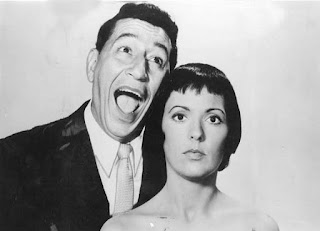The Second Mrs. Jefferson Davis Was Not a Mulatta
Above is a reasonably inoffensive reproduction of an 1840s daguerreotype showing Jefferson Davis and his second wife, Varina Howell. It has been heavily, but carefully, retouched so that the outlines of their figures and features don't get lost in subsequent reproduction.
There are some better, and some worse, reproductions floating about. One particularly bad one we sometimes see has Mrs. Davis looking positively negroid, with a flat, misshapen nose and thick lips. I came across a blog posting that expatiated at great length on how Varina was obviously part black, and what does this ultimately mean in history? (Reblogged on something called Chiniquy; the original blog is long gonzo.)
Of course Varina did not have a touch of the tarbrush; the blogger just had a bad picture, and apparently didn't understand enough about mid-19th century photo technology to realize why this might be the case.
Anyway, unnerved, I wrote the following comment:
The photograph you use of Varina and Mr Davis, from the time of their marriage, has been retouched to give Varina negroid features. This may be the result of poor retouching, or perhaps someone who didn’t like Varina defaced and circulated the picture!
There are many copies of this daguerreotype—photographs, paintings, engravings, etc. While Jefferson Davis looks pretty much the same from version to version, Varina’s features vary widely. She is sometimes pale with delicate features, sometimes broad-nosed, olive-skinned, and thick-lipped. In your example her nose is grossly and asymmetrically misshaped, as though it had once been smashed by a stone, or suffered other trauma.
A broken, distorted nose does not appear in later portraits of Varina, in which she invariably has a narrow, finely shaped nose. Therefore we can rest assured that this is a poor likeness, heavily altered.
Any reproduction of a daguerreotype you see actually derives from a direct photograph of the original image (which itself was a mirror-image of the actual sitting). Inevitably much of the fine detail gets lost in such reproduction techniques. In order to prepare the image for engraving or lithography, things like lip lines and nostrils were often drawn in. Without this retouching, a face might end up mass-printed as a featureless blur.


Comments